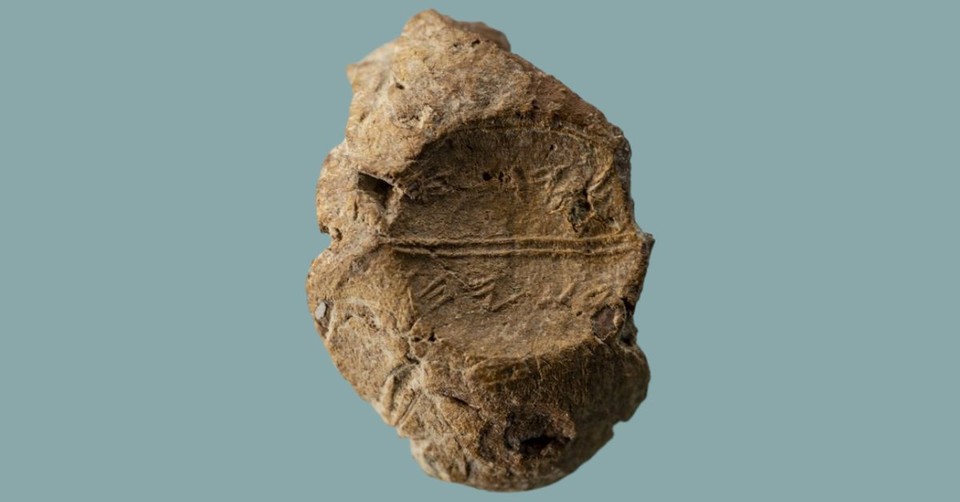Archaeologists Uncover 2,600-Year-Old Clay Seal that ‘Confirms the Bible’
Archaeologists in Jerusalem have announced the discovery of a small clay seal dating to roughly the late seventh to early sixth century B.C., a cut of time that includes the reign of King Josiah. The tiny object bears a Hebrew inscription reading, “belonging to Yed[a‛]yah (son of) Asayahu” and even preserves a fingerprint thought to belong to the ancient owner. For believers this is not just an artifact; it is a tangible echo of people and events named in Scripture.
The inscription links to the name Asayahu, rendered in English Bibles as Asaiah, a figure mentioned in 2 Chronicles 34:20, 2 Kings 22:12, and 2 Kings 22:14. Those passages place Asaiah as one of the king’s servants involved in the dramatic religious reforms of Josiah, the discovery of the Book of the Law, and the delegation to the prophetess Huldah. The historical setting matches the seal’s archaeological dating, which makes the find striking for anyone who takes the Bible seriously.
The seal was recovered through the Temple Mount Sifting Project, a salvage archaeology effort that has sifted soil and debris removed from the Temple Mount without complete original excavation oversight. That project has returned many small artifacts that together form a larger picture of Jerusalem’s administrative life during the First Temple period. This sealing, thumb-sized and practical, would have been used to mark containers or documents belonging to an official household.
Asaiah’s son named on the seal, Yedayah, does not appear in Scripture, but that absence is not unusual for minor figures whose family names surface in administrative records. Researchers describe the connection to the biblical Asaiah as “highly plausible,” noting that seals of this kind were typically reserved for people of rank. The context of the find on the Temple Mount further strengthens the argument that the owner worked in temple or royal administration.
“Historically, seals like these were reserved for officials of high rank, and many individuals named in similar discoveries from Jerusalem have been directly identified with biblical-era officials,” the news release said. “The artifact’s discovery on the Temple Mount further supports the likelihood of this connection. Thus, the clay sealing’s owner was probably involved in Temple administration or in the royal household, much like his father.”
Beyond names and titles, the physicality of the seal—the small fingerprint, the worn impression—pulls the ancient world into sharp focus. This object belonged to a human being who handled clay the same way we handle objects today, and that bridging of centuries is emotionally powerful. For people of faith it provides a fresh anchor for trust in Scripture’s historical claims.
Leading Christian voices have been unequivocal in their interpretation. Ken Ham of Answers in Genesis called the find another confirmation of biblical history and its reliability. His stance reflects a broader conviction among many Christians that archaeology repeatedly corroborates details in the Bible, large and small.
“Yes, the Bible is accurate in everything it says, even the minor, seemingly insignificant details. Artifacts belonging to the son of this official can be found because Asaiah really did exist and really did serve in the court of King Josiah,” Ham said. “Over and over again, archaeology has confirmed the Bible’s history.”
Scholars and faithful readers can agree on the thrill of material evidence that aligns with texts people have read for millennia. Still, careful interpretation is required: a single seal does not solve every historical question, but it does add weight to the historical grid scholars use to reconstruct the past. The combination of inscription, findspot, dating, and the human fingerprint makes this a particularly vivid addition to the archaeological record.

